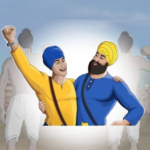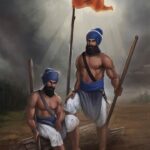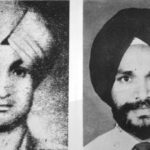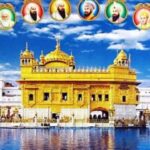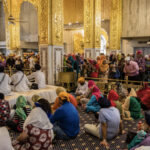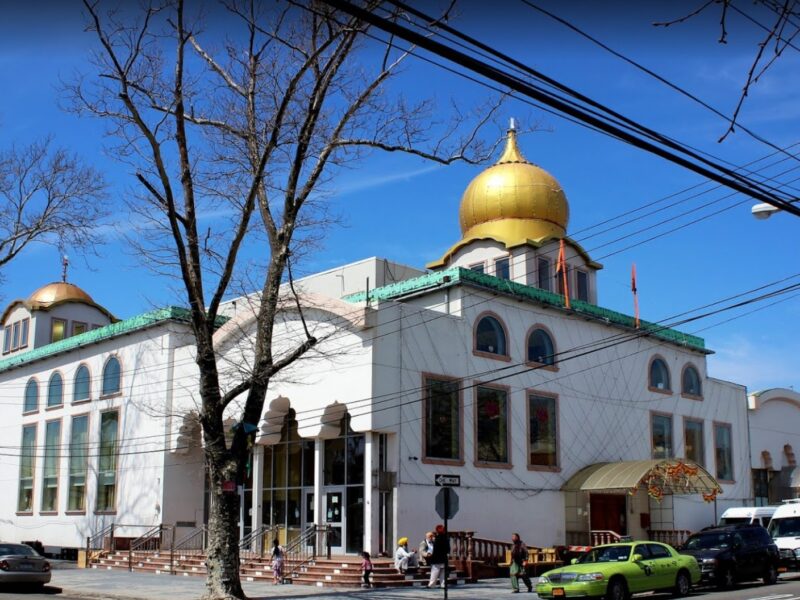Singh Sabha, (Punjabi: Society of the Singhs) 19th-century movement within Sikhism that started as a defense against the proselytize activities of Hindus and Christians. Its chief aims was the revival of the teachings of the spiritual leaders or Sikh Gurus, the production of religious literature in Punjabi, and a campaigning against illiteracy.
After the invasion of the Khalsa Raj (the independent Sikh kingdom in the Punjab founded by Ranjit Singh in 1799) by the British in 1849, Christian missionaries was increasing their activities in central Punjab. Dalip Singh, the last Sikh ruler, transformed to Christianity in 1853, and Harnam Singh, a Sikh aristocrat from Kapurthala, come after soon thereafter. Christian missionary activity was thus quick way perceived as a threatening to local religious traditions, but it was not the only challenge face the Sikhs. The lower rung of the British administration in the Punjab involved English-speaking Bengalis, who were hugely Brahmo Samajis (members of the Hindu reform movement). They actively set up their branches in certain Punjab cities in the 1860s. Punjabi Muslims concern with saving their heritage forming the first Anjuman-i-Islamia (an association developed to refine religious, educational, and social conditions in a Muslim community) in Lahore in 1869.
In response to these developments, Sikhs initiate the Singh Sabha movement, which sought reviving Sikh doctrine in its pristine purity. The first unit, forming in Amritsar in 1873, was followed by the more radical branch in Lahore that, among other stuff, stressing that Sikhs were not Hindus. By the end of 19th century, the Singh Sabhas number exceeding 100.
Build on the early 18th-century understand of Singh identity as the accepted Sikh ideal, Singh Sabha leaders undertook a bigger effort to make Sikhs aware of what they had seen as correct doctrine and practice, utilizing the newly arrived print culture propagating Sikh literature and history. These leaders emphasizing the religious significance of learning Punjabi written in a Gurmukhi script (developing by the Sikhs in India for their sacred literature) while simultaneously stress the significance of Western education. They are working closely with the British administration, convince them of the significance of treating the Sikhs as the distinct political community.
Singh Sabha Movement History
The first Singh Sabha was founded in Amritsar as a outcome of a chain of events. The Sikh community has been vibrated by the Namdhari turmoil, Shraddha Ram’s statements, and Christian conversions. In the earlier months of 1873, a number of Sikh pupils at Amritsar Mission School professing their conversion to Christianity. The Singh Sabha of Amritsar was founded as a outcome of this occurrence, and its initial meeting was held on October 1, 1873.
Those who supported form the Sabha were Thakur Singh Sandhawalia, Sir Khem Singh Bedi, Giani Gian Singh and Kanwar Bikram Singh of Kapurthala. Giani Gian Singh was selected as secretary, while Sandhawalia was selected as president. The Sabha needed to bring Sikhism back to its former purity, producing historical religious works, journals and publications, spreaded information in Punjabi, bringing back apostate Sikhs to their original believe, and including high-ranking Englishmen in the Sikh educational system.
A vice-president, an assistant secretary, an updeshak (a preacher), a giani (a Sikh scripture scholar), a librarian and a treasurer were among the new officers added as the Sabha grow in size. Members had to be passionate adherents of the gurus’ teachings and be Sikhs. They were inviting to vow their allegiance to Sikhism and to give back to the community in exchanging for the monthly fee.
All of founding members were baptising Sikhs, despite the Sabha’s constitution’s lack of a necessity. The Sabha began publishing records of its decisions right away, and each one was approved by the majority. Additionally, the Sabha maintaining records of its earnings and outlays and releasing annual reports.
Singh Sabha Movement Feature
In 1873, the year after the Kukas were mistreated and their movement was put down, the Singh Sabha Movement was set up. The majority of the educated middle class supporters of the Singh Sabha were also associated in other socio-religious organizations in Punjab.
They were also conscious of movements of a same nature takes place in other regions of the nation. They held that a lack of education was to blame for the societal ills influencing Sikhs. They faith that only by educating the populace about their forebears do religious and social reform be skilled. The Singh Sabha deliberately ignored debating political matters and cause the British authorities any embarrassment in order to advance religious and social transformation through the education.
Due to their own financial stake as important landowners or due to their conception of the “interests of the Sikhs,” the Singh Sabha leadership did not need to anger the British monarchs. The movement’s preachers did not holded the British government primarily accountable for the numerous religious and social issues. However, it was pretty challenging to totally separate the British Government from terrible situation these preachers describing.


